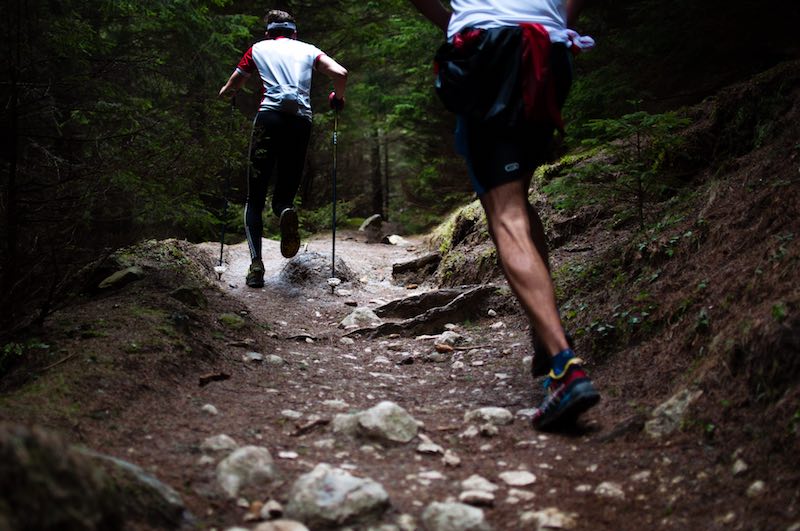 To perform well in trail running or to ensure safety, it is recommended to have appropriate trail gear that depends on several factors. The gear needed will vary depending on the weather, whether it’s rainy, cold, or nighttime. It also depends on one’s trail running experience and the estimated duration of the run. In competition, it’s important to check the race regulations regarding mandatory gear.
To perform well in trail running or to ensure safety, it is recommended to have appropriate trail gear that depends on several factors. The gear needed will vary depending on the weather, whether it’s rainy, cold, or nighttime. It also depends on one’s trail running experience and the estimated duration of the run. In competition, it’s important to check the race regulations regarding mandatory gear.
Contents
Trail Shoes
In good weather, for short runs on easy terrains, regular running shoes may be suitable. However, on technical terrain with wet or slippery ground, it’s recommended to opt for trail running shoes.
What’s the difference? Trail shoes provide better grip on uneven surfaces and enhanced lateral stability. These shoes are stiffer, providing less foot movement. Some models are reinforced on the sides to reduce wear and tear, and in the front to protect toes from impacts against rocks.
Consider looking at the shoe’s drop and weight that suit you best, ensuring the right balance between lightness and comfort according to your goals.
If you’re not familiar with a brand’s sizing or need specific advice, it’s recommended to consult a specialized store for guidance.
If you prefer to shop online, compare the weight and drop of trail shoes on this shoe comparison website.
Trail Clothing
Be prepared according to weather conditions. In summer, if it’s very hot, bring one or two technical t-shirts and possibly a light, waterproof jacket in case of rain. For rainy weather, a waterproof jacket is essential. Check for waterproofing or water pressure resistance (measured in mm of Schmerber, named after the textile engineer who invented this measurement tool). A rating of over 10,000 Schmerber indicates high waterproofing level.
In cold conditions, wear multiple technical layers. Ensure to keep the body’s extremities warm (head, hands, feet) with a hat or cap against rain, waterproof gloves, and warm socks.
For bottoms, in good weather, opt for shorts or tights (which reduce friction). Choose one with pockets if possible, for practical storage of keys, energy gels, or other items. Among breathable and lightweight technical fabrics, consider checking out the CRAFT range, which offers high-quality textiles.
In trail running, compression socks are often seen. They can relieve calf muscles on long distances and provide thermal comfort (especially in cold weather or during summer to prevent sunburn on the calves).
Hydration System
Always ensure you have enough water. You have two options for this: use bottles in a bottle holder or waist belt, or use a Camelback backpack with an integrated hydration system. Make sure to clean the bottles or water pouches well, as they can harbor bacteria if not cleaned immediately after the trail run.
The waist belt or backpack should allow you to carry drinks, food, equipment, and even hold your poles. Make sure to choose the right size.
Poles
Poles provide more power during ascents by engaging both the lower and upper body. They can relieve leg muscles over long distances. However, they do require more energy expenditure. Therefore, it’s a strategy to adopt depending on the terrain.
Consider the size, which should be slightly taller than the height of your elbow when at a 90-degree angle. Check if the poles are foldable and easy to open/close.
Find all our advice on how to choose the right trail running poles.
Mandatory Gear
Finally, check the list of mandatory gear. The requirements may vary depending on the race and its length. Some commonly required mandatory gear includes:
– Fully charged mobile phone
– Minimum water reserve
– Personal cup
– Survival blanket
– Whistle
– Waterproof jacket
– Headlamp with batteries
Check the websites of the races for specific details: UTMB, Mont Blanc Marathon, Templiers, Diagonale des Fous, MaxiRace, and more.
We wish you the best for your upcoming trail runs. Being well-equipped for long hours of effort is never regrettable. Before races, make sure to test all your gear during training.